Description
The instruction for medical use of medicine of Ko-Amlessa the Trade name of Ko-Amlessa Miezhdongarodnoye the unlicensed name Is not present the Dosage form of the Tablet, 2 mg / 5 mg / 0.625 mg, 4 mg / 5 mg / 1.25 mg, 4 mg / 10 mg / 1.25 mg, 8 mg / 5 mg / 2.5 mg and 8 mg / 10 mg / 2.5 mg Structure One tablet contains active agents: Tablets of 2 mg / 5 mg / 0.625 mg: a perindoprila erbumin 2 mg of an amlodipin besilat 6.935 mg (it is equivalent to an amlodipin of 5 mg), indapamid 0.625 mg of the Tablet of 4 mg / 5 mg / 1.25 mg: a perindoprila erbumin 4 mg of an amlodipin besilat 6.935 mg (it is equivalent to an amlodipin of 5 mg), indapamid 1.250 mg of the Tablet of 4 mg / 10 mg / 1.25 mg: a perindoprila erbumin 4 mg, an amlodipina besilat 13.870 mg (it is equivalent to an amlodipin of 10 mg), indapamid 1.250 mg of the Tablet of 8 mg / 5 mg / 2.5 mg: a perindoprila erbumin 8 mg, an amlodipina besilat 6.935 mg, (it is equivalent to an amlodipin of 5 mg) indapamid 2.5 mg of the Tablet of 8 mg / 10 mg / 2.5 mg: a perindoprila erbumin 8 mg, an amlodipina besilat 13.870 mg, (it is equivalent to an amlodipin of 10 mg) indapamid 2.5 mg excipients: cellulose microcrystalline type 200, cellulose microcrystalline type 112, starch prezhelatinizirovanny type 1500, sodium of starch glikolit, Calcii chloridum hexahydrate, Natrii hydrocarbonas, silicon dioxide colloidal anhydrous, magnesium stearate the Description of the Tablet of an oval form, from white till almost white color, biconvex, from risky on one party, 9 mm long (for a dosage of 2 mg / 5 mg / 0.625 mg). Tablets of round shape, from white till almost white color, slightly biconvex, with a facet, with a diameter of 7 mm (for a dosage of 4 mg / 5 mg / 1.25 mg). Tablets of an oval form, from white till almost white color, biconvex, with risky on one party, 12 mm long (for a dosage of 4 mg / 10 mg / 1.25 mg). Tablets of round shape, from white till almost white color, biconvex, with a facet, with a diameter of 9 mm (for a dosage of 8 mg / 5 mg / 2.5 mg). Tablets of round shape, from white till almost white color, biconvex, with risky on one party, with a facet, with a diameter of 9 mm (for a dosage of 8 mg / 10 mg / 2.5 mg). Pharmacotherapeutic group the Drugs influencing a system renin-angiotensin. Angiotenzin-konvertiruyushego Enzyme (AKE) inhibitors. AKF inhibitors in a combination with other drugs. The ATX C09BX01 code the Pharmacological Perindopril Pri Pharmacokinetics properties intake, perindoprit is soaked up quickly, the maximum concentration (Cmax) is reached within 1 hour. The half-life period in plasma is 1 h Perindopril is pro-medicine. 27% of the accepted dose of a perindopril come to a blood stream in the form of an active metabolite of the perindoprilat. Except the active perindoprilat in an organism five more inactive metabolites are formed. Perindoprilat Cmax in plasma is reached in 3-4 h after administration of drug. Meal reduces transformation of a perindopril in perindoprilat, and, therefore – its bioavailability. Therefore the perindopril erbumin is recommended to be accepted once a day, orally, in the morning before a breakfast. Communication between a dose of a perindopril and its exposure in plasma is linear. The volume of distribution of the untied perindoprilat is about 0.2 l/kg. Linking of the perindoprilat with proteins of plasma makes 20%. Generally binding happens about the angiotensin-the converting enzyme (ACE), but depends on concentration of drug. Perindoprilat is allocated with urine, final elimination half-life of its free fraction makes about 17 hours that allows to reach an equilibrium state in 4 days. Removal of the perindoprilat slows down at elderly patients and also at patients with a heart or renal failure. Therefore, usual medical observation has to include frequent monitoring of level of creatinine and potassium. Pri dialysis clearance of the perindoprilat makes 70 ml/min. The kinetics of a perindopril changes at patients with cirrhosis: the hepatic clearance of an initial molecule slows down twice. However the number of the formed perindoprilat does not decrease and dose adjustment is not required. Indapamid Indapamid is quickly and completely soaked up from digestive tract. The maximum concentration in blood plasma at people is reached approximately in one hour after oral administration. Linking with proteins of blood plasma makes 79%. Elimination half-life (T1/2) makes the 14-24th (on average-18ch). Repeated reception does not lead to cumulation. Indapamid is brought, mainly, with urine (70% of a dose) and a stake (22%) in the form of inactive metabolites. At patients with a renal failure the pharmacokinetic parameters of an indapamid do not change. Amlodipin Pri intake in therapeutic doses amlodipin is well soaked up, Cmax is reached in 6-12 hours after reception. The absolute bioavailability is 64-80%. The volume of distribution is equal to about 21 l/kg. Meal does not affect bioavailability of an amlodipin. About 97.5% of the circulating amlodipin are connected with proteins of plasma. T1/2 makes 35-50 hours of plasma that corresponds to prescribing of drug once a day. Amlodipin is substantially metabolized in a liver before formation of inactive metabolites, 60% of the accepted dose are removed with urine, 10% – in the form of not changed amlodipin. Time of achievement of Cmax of an amlodipin in plasma are identical at elderly and at young patients. At elderly patients the clearance of an amlodipin decreases that is followed by increase in AUC and T1/2. The Recomendumy mode of dosing for elderly the same though increase in a dose has to is carried out with care. At patients with abnormal liver functions the elimination half-life of an amlodipin slows down Ko-Amlessa’s Pharmacodynamics represents a combination of a perindopril of an erbumin – AKF inhibitor, an indapamid – chlorosulphonamide diuretic and an amlodipin – the antagonist of calcium ions. Pharmacological effect of drug is caused by properties of each of these components taken separately and also additive synergy effect of three components at their combination. The mechanism of action and pharmakodinamichesky effects Perindopril is an inhibitor of the enzyme turning angiotensin I into angiotensin II (AKF) – vasoconstrictive substance. Besides, enzyme stimulates development of Aldosteronum with bark of adrenal glands and bradykinin degradation – vasodilating substance – on inactive heptapeptides. Results: – decrease in development of Aldosteronum – increase in activity of renin of plasma as Aldosteronum does not strengthen negative feedback – decrease in the general peripheric resistance of vessels with primary action on a vascular bed of muscles and kidneys at long-term treatment, at the same time does not happen delays of salts and water or reflex tachycardia. Antihypertensive action of a perindopril is also shown at patients with low or normal concentration of renin. Action of a perindopril is caused by activity of a metabolite of the perindoprilat. Other metabolites are not active. Perindopril reduces load of heart: – having vasodilating effect on veins, perhaps, by change of metabolism of prostaglandins, reduces initial loading – by means of decrease in the general peripheric resistance of vessels reduces an afterload. It is proved that at patients with heart failure perindoprit: – reduces the filling pressure of the left and right ventricle – reduces the general peripheric vascular resistance – increases warm emission and improve cardiac index – increases a local blood stream in muscles. Also considerably results of exercise tolerance test improve. Indapamid is derivative sulfonamide with an indole ring, pharmacological treats thiazide group of diuretics. Indapamid inhibits a sodium reabsorption in the cortical parting segment. It increases removal of sodium and chlorides with urine and to a lesser extent – discharge of potassium and magnesium, thereby increasing an exit of urine and having antihypertensive effect. Amlodipin – the antagonist of calcium, blocks receipt of calcium ions through membranes in smooth muscle cells of a myocardium and vessels. The mechanism of hypotensive action of an amlodipin is caused by the direct weakening impact on unstriated muscles of vessels. The exact mechanism of action of an amlodipin in stenocardia is not finalized, but amlodipin reduces ischemia the next two ways: 1. Expands peripheral arterioles and thus reduces the general peripheric vascular resistance (an afterload on heart). Due to the unloading of heart the load of heart decreases that leads to decrease in consumption of energy and oxygen requirement. 2. Expands the main coronary arteries and coronary arterioles. Their dilatation increases intake of oxygen in a myocardium at patients with vasospastic stenocardia (Printsmetal’s stenocardia or alternative stenocardia). At patients with arterial hypertension the reception of an amlodipin in a single daily dose provides clinically significant lowering of arterial pressure for 24 hours as in situation “lying”, and “standing”. At patients with stenocardia the use of an amlodipin increases time of performance of physical activity once a day, prevents development of an attack of stenocardia and a depression of a segment of ST (on 1 mm). Amlodipin reduces the frequency of attacks of stenocardia and quantity of the taken pill of short-range nitroglycerine. Amlodipin has no adverse impact on a metabolism and lipids of blood plasma and can be applied at patients with bronchial asthma, diabetes and gout. Clinical performance and safety Perindopril is active at all degrees of hypertensia: easy, moderate and heavy. Decrease in systolic and diastolic arterial blood pressure are observed at patients both in situation “lying”, and in a standing position. The maximum antihypertensive activity after a single dose is from 4 to 6 hours and remains within 24 hours. There is high extent of residual blocking of AKF in 24 hours (about 80%). At the reacted patients the normalized arterial blood pressure is reached in one month and remains without tachyphylaxis. The termination of treatment has no converse effect in hypertensia. Perindopril has vasodilating properties, restores elasticity of the main arterial trunks, adjusts gistomorfometrichesky changes of resistance of arteries and leads to decrease in a hypertrophy of a left ventricle. If necessary addition of thiazide diuretics gives additive synergetic effect. The AKF inhibitor combination with thiazide diuretic reduces the risk of development of a hypopotassemia connected with intake of only one diuretic. Indapamid in monotherapy has antihypertensive effect lasting up to 24 hours. This effect is shown in doses in which diuretic properties are minimum. Antihypertensive action of an indapamid is connected with improvement of elasticity of arteries and reduction of resistance of arterioles and decrease in the general peripheric vascular resistance. Indapamid reduces a hypertrophy of a left ventricle. Thiazide and tiazidopodobny diuretics when exceeding the recommended dose reach the plateau of therapeutic effect while the frequency of side effects continues to increase. If treatment is insufficiently effective, it is not recommended to raise a dose. It is also established what indapamid does not influence metabolism: – lipids (triglycerides, cholesterol of lipoproteins of low density and cholesterol of lipoproteins of high density) – carbohydrates, even at patients with arterial hypertension and diabetes. Amlodipin Issledovaniya of hypotensive and hypolipidemic types of treatment in prevention of heart attacks (Antihypertensive and Lipid-Lowering Treatment to Prevent Heart Attack Trial, ALLHAT) in which new types of therapeutic treatment were used (amlodipin or AKF inhibitor as drugs of the first line of therapy) in comparison with thiazide diuretic in slight and moderate hypertensia, did not reveal significant differences in cardiovascular outcomes between therapy amlodipiny and therapy by thiazide diuretics. The combination of a perindopril and indapamid renders dose-dependent antihypertensive effect on diastolic and systolic arterial blood pressure at patients in situation “lying” and “standing”, regardless of age. Effect of drug remains during 24 h. The lasting therapeutic effect develops less, than in 1 month from the beginning of therapy and is not followed by tachycardia. The termination of treatment is not followed by development of a syndrome of “cancellation”. It is proved that co-administration of a perindopril and indapamid has antihypertensive effect of synergy origin that is result of separate effects of components of drug. Indications – essential hypertensia the Route of administration and doses For intake. The maximum recommended dose To – Amlessy makes 8 mg / 10 mg / 2.5 mg a day. It is preferable to take one pill a day in the form of a single dose in the morning, before food. If necessary, tablets To – Amlessy with a dosage of 4 mg / 10 the mg / 1.25 mg and 8 mg / 10 mg / 2.5 mg can be divided into equal doses. The patient can divide a tablet with a dosage of 4 mg / 10 mg / 1.25 mg or 8 mg / 10 mg / 2.5 mg, having put it on a plain surface from risky, directed up, and having pressed two fingers both ends of a tablet. Patients with impaired renal function and elderly patients Removal of the perindoprilat slows down at elderly patients and also at patients with a renal failure. Therefore, usual medical observation has to include frequent monitoring of level of creatinine and potassium. At patients with a severe form of a renal failure (KK is lower than 30 ml/min.), drug treatment To – Amlessa is contraindicated. Doses of 8 mg / 5 to mg / 2.5 mg and 8 mg / 10 to mg / 2.5 are contraindicated to mg in a renal failure heavy and moderately severe (KK lower than 60 ml/min.). Drug To – Amlessa patients can appoint with KK ³ 60 ml/min. Individual titration of a dose of separate components is recommended to these patients. Changes of concentration of an amlodipin in plasma do not correlate with extent of damage of kidneys. Patients with a liver failure At patients with a severe form of a liver failure the drug treatment To – Amlessa is contraindicated. The dosing mode for patients with a moderately severe liver failure is not set. Therefore, such patients To – Amlessu should appoint with care. Use in pediatrics Safety and efficiency of use To – Amlessy at children and teenagers are not established so far. Side effects Use of a perindopril inhibits renin-angiotensin-aldosteronovuyu a system and promotes potassium loss reduction which is caused indapamidy. At 2% of the patients accepting 2 mg perindoprila/0.625 mg of an indapamid at 4% of the patients accepting 4 mg perindoprila/1.25 mg of an indapamid and at 6% of the patients accepting 8 mg perindoprila/2.5 mg of an indapamid the hypopotassemia is noted (level калия<, 3.4 mmol/l). The most frequent side reactions during treatment amlodipiny are drowsiness, dizziness, a headache, heartbeat, reddening, an abdominal pain, nausea, swelled an ankle joint, swelled also fatigue. Perindopril/Indapamid Chasto (from ≥1/100 to & lt, 1/10) – dizziness, a headache, paresthesia, vertigo – disorders of vision (including a diplopia) – sonitus – hypotension (and the effects connected with hypotension) – short wind, cough – an abdominal pain, nausea, pains in epigastriums, vomiting, dyspepsia, dryness in a mouth, a dysgeusia, diarrhea, a constipation – anorexia – an itching, rash, makulopapulezny rashes – muscular spasms – an asthenia Infrequently (from ≥1/1.000 to & lt, 1/100) – allergic reaction: a small tortoiseshell – changes of mood – a sleep disorder – a bronchospasm, – a Quincke’s disease of the face, extremities, lips, mucous membranes, language, a glottis and/or throat – perspiration – possible aggravation of already existing sharp disseminate lupus erythematosus – disturbance of renal function – impotence Seldom (from ≥1/10.000 to & lt, 1/1.000) – the increased content of bilirubin and liver enzymes in serum Is very rare (& lt, 1/10.000) – a leukopenia/neutropenia, an agranulocytosis or a pancytopenia, thrombocytopenia, aplastic anemia, hemolytic anemia – confusion of consciousness – stenocardia, perhaps, caused by excessive hypotension in patients of group of high risk – a myocardial infarction, perhaps, caused by excessive hypotension in patients of group of high risk – arrhythmia (including bradycardia, ventricular tachycardia and fibrillation of an auricle
) – a vasculitis – rhinitis – eosinophilic pneumonia – pancreatitis – hepatitis, cytolytic or cholestatic hepatitis – an erythema – Stephens-Johnson’s syndrome (malignant exudative erythema) – a toxic epidermal necrolysis – an acute renal failure Does not know (it is impossible to estimate on the available data) – torsade de pointes (perhaps from the death) – a possibility of approach of hepatic encephalopathy in case of a liver failure – photosensitivity – a hypopotassemia – a hyponatremia with a hypovolemia, the causing dehydrations and orthostatic hypotension – a vasculitis – the increased urea level at blood and creatinine in plasma, a hyperpotassemia Amlodipin Chasto (from ≥1/100 to & lt, 1/10) – drowsiness, dizziness, a headache – an abdominal pain, nausea – hypostasis of an ankle joint – hypostasis, peripheral hypostasis – fatigue Infrequently (from ≥1/1.000 to & lt, 1/100) – an increase or weight reduction – insomnia, changes of mood – a tremor, a hypesthesia, paresthesia – disorders of vision (including a diplopia) – sonitus – a cardiopalmus – a syncope – hypotension (and the effects connected with hypotension) – short wind, rhinitis – vomiting, dyspepsia, changes in an intestines vermicular movement, dryness in a mouth – an alopecia, a purpura, decolouration of skin, perspiration, an itching, rash – an arthralgia, myalgia, muscular spasms, a dorsodynia, – urination disturbances, a night polyuria, urination increase – impotence, a gynecomastia – a stethalgia, an asthenia, pain, an indisposition – decrease or increase in weight Is rare (from ≥1/10.000 to & lt, 1/1.000) – confusion of consciousness Is very rare (& lt, 1/10.000) – a leukopenia/neutropenia, thrombocytopenia – a Quincke’s edema, allergic reaction: a small tortoiseshell – a hyperglycemia – a hypertension – peripheral neuropathy – a myocardial infarction, perhaps, caused by excessive hypotension in patients of group of high risk – arrhythmia (including bradycardia, ventricular tachycardia and fibrillation of auricles) – cough – a hypertrophic ulitis – pancreatitis, gastritis – hepatitis, cholestatic jaundice – an erythema (different types) – a Quincke’s disease of the face, extremities, lips, mucous membranes, language, a glottis and/or throat – an erythema – exfoliative dermatitis – Stephens-Johnson’s syndrome (malignant exudative erythema) – photosensitivity – increase in level of liver enzymes: Nuclear heating plant, ACT (generally correspond to a cholestasia) At reception of blockers of calcium channels was reported about isolated cases of an extrapyramidal syndrome. The contraindications Connected with perindoprily: – hypersensitivity to a perindopril (or to the AKF any other inhibitor) – the Quincke’s disease in the anamnesis connected with the previous treatment by AKF inhibitors – a hereditary or idiopathic Quincke’s disease – pregnancy Connected with indapamidy: – hypersensitivity to an indapamid (or to any other derivatives of sulfonamide) – a renal failure of heavy and moderate degree (КК<, 60 ml of mines) – a heavy liver failure – hepatic encephalopathy – a hypopotassemia – simultaneous use of antiarrhytmic drugs which can cause ventricular arrhythmias, such as ‘pirouette’ – a lactation Connected with amlodipiny: – hypersensitivity an amlodipina (or to any other derivatives of dihydropyridine) or to any of excipients – heavy arterial hypotension – shock, including cardiogenic shock – obstruction of an output path of a left ventricle (for example, a heavy stenosis of an aorta) – hemodynamically unstable heart failure after an acute myocardial infarction Due to the lack of sufficient therapeutic experience of use, Ko-Amlessa’s tablet it is not necessary to apply at patients: – being on dialysis – with incurable dekompensirovanny heart failure (in the absence of the main treatment) – children’s and teenage age up to 18 years Medicinal interactions not recommended combinations At the combined intake of lithium and AKF inhibitors were available cases of reversible increase in concentration of lithium in serum and toxicity cases. Simultaneous use of thiazide diuretics can increase in addition levels of lithium and strengthen toxic effect of lithium with AKF inhibitors. Perindoprit use of a combination and the indapamida with lithium is not recommended, but in need of use of this combination, it is necessary to carry out careful monitoring of levels of lithium in blood serum Though usually potassium content in serum remains within norm, at some patients accepting perindoprit, there can come the hyperpotassemia. Kaliysberegayushchy diuretics (for example, Spironolactonum, Triamterenum or amiloride), can lead potassium additives and kaliysoderzhashchy substitutes of salt to substantial increase of level of potassium in blood serum. Therefore the combined reception of a perindopril with these medicines is not recommended. If the accompanying use of these drugs is shown because of the expressed hypopotassemia, then at their reception it is necessary to observe extra care and to carry out frequent monitoring of content of potassium in blood serum. Estramustinum increases risk of undesirable effects, such as Quincke’s disease (angiootek). Combinations which demand extra care Baclofenum are strengthened by expressiveness of hypotensive effect. Monitoring of arterial blood pressure and renal function is necessary and also it is necessary to adapt a dose of antihypertensive drug. Non-steroidal anti-inflammatory drugs (NPVP), including aspirin in high doses at a concomitant use them with AKF inhibitors reduce hypotensive effect. The accompanying intake of AKF and NPVP inhibitors can increase risk of deterioration in renal function, including a possible acute renal failure, increase in content of potassium in blood serum, especially at patients with already available impaired renal function. It is necessary to appoint the combined intake of these drugs with care, especially at elderly patients. It is necessary to monitor adequate hydration of an organism of patients. At the beginning of combination therapy and also periodically during therapy, it is necessary to carry out monitoring of renal function. At the patients receiving antidiabetic drugs (insulin, hypoglycemic sulfonamides), simultaneous use of AKF inhibitors can lead to strengthening of their hypoglycemic effect. The hypoglycemia comes seldom (probably improvement of tolerance of glucose with the subsequent decrease in need for insulin). Due to the risk of development of a hypopotassemia, indapamid it is necessary to apply with care in combination with drugs which cause torsade de pointes, such as antiarrhythmic drugs of the class IA (quinidine, hydroquinidine, Disopyramidum), antiarrhythmic drugs of class III (Amiodaronum, dofetilid, ibutilid, the bretylium, sotalol), some neuroleptics (Chlorpromazinum, tsiamemazin, levomepromazinum, thioridazine, trifluoperazin), benzamides (amisulprid, Sulpiridum, sultoprid, tiaprid), such as bepridit, tsisaprid, difemanit phenyl propyl ketones (Droperidolum, a haloperidol), other neuroleptics (Pimozidum), other substances, erythromycin IV, galofantrin, mizolastin, moxifloxacin, pentamidine, sparfloksatsin, Vincaminum IV, methadone, astemizol, terfenadin. Prevention of decrease in level of potassium and correction of doses, if necessary – monitoring of QT of an interval is necessary. The drugs reducing potassium level (Amphotericinum B (in / c), system glucocorticoids and mineralokortikoida (system use), the tetrakozaktida stimulating depletive) increase risk of decrease in level of potassium (additive effect) in this connection careful monitoring of level of potassium and correction of doses is necessary, the special attention is required in treatment cases by cardiac glycosides. Use of the stimulating depletive is forbidden Cardiac glycosides: low level of potassium favors to toxic influence of heart glucosides in this connection it is necessary to carry out monitoring of level of potassium and the ECG, and/or, if necessary, to reconsider treatment. Metformin: lactoacidosis in connection with metmorfiny, caused by a possible functional renal failure, is connected with diuretics, in particular with loopback diuretics. It is impossible to apply metmorfin at creatinine level in plasma higher than 15 mg/l (135 mikromol/l) at men and 12 mg/l (110 mikromol/l) is at women. The iodated contrast agent: in cases when dehydration is caused by diuretics, there is an increased risk of an acute renal failure, especially when using high doses of the iodated contrast agent. Before introduction of the iodated structure it is necessary to carry out restoration of volume of liquid. Salts of calcium increase calcium level in connection with reduced removal of calcium with urine. Cyclosporine increases risk of increase in level of creatinine without change of the circulating cyclosporine level even if there is no decrease in salt or water. Simultaneous use of an amlodipin with strong or moderate CYP3A4 inhibitor (protease inhibitors, azolny fungicides, macroleads as erythromycin or klaritromitsin, verapamil or diltiazem) can lead to significant increase in influence of an amlodipin. Elderly people can have more expressed clinical transition of these changes of the personal computer. In this regard clinical monitoring and selection of a dose can be necessary. Simultaneous use of the inductors CYP3A4 (for example, rifampicin, the St. John’s wort which is made a hole) can lead to decrease in plasma concentration of an amlodipin. Amlodipin it is necessary to apply with care with the inductors CYP3A4. Grapefruit juice at some patients can increase bioavailability and hypotensive action of an amlodipin. Dantrolen (infusion): considering risk of development of a hyperpotassemia, it is necessary to avoid simultaneous use of blockers of calcium channels, such as amlodipin at the patients sensitive to a malignant hyperthermia and at treatment of a malignant hyperthermia. Simultaneous repeated use of an amlodipin in a dose of 10 mg with simvastatiny in a dose of 80 mg led to increase in influence of a simvastatin by 77%, in comparison with monotherapy simvastatiny. It is recommended to limit a dose of a simvastatin at the patients accepting amlodipin to 20 mg a day. Combinations which demand care Imipraminopodobny (tricyclic) antidepressants neuroleptics cause strengthening of hypotensive action, increase in risk of developing orthostatic hypotension (additive effect). Corticosteroids, tetrakozaktid reduce hypotensive action (the delay of water and electrolytes caused by corticosteroids). At simultaneous use of drug of Ko-Amlessa happens to other hypotensive drugs more profound lowering of arterial pressure. Allopyrinolum, cytostatic or immunosuppressive drugs, system glucocorticosteroids or procaineamide at simultaneous use with AKF inhibitors can contribute to the development of a leukopenia. AKF inhibitors strengthen antihypertensive action of some means for the general anesthesia. Combinations which should be taken into account At the patients accepting diuretics especially patients with the lowered volume of the circulating blood and/or deficit have salts, after an initiation of treatment the excessive lowering of arterial pressure can be observed by AKF inhibitor. Diuretic cancellation, increase in volume of the circulating blood or intake of salt before an initiation of treatment and also purpose of low initial doses of a perindopril and their gradual increase reduce risk of developing hypotension. Sympathomimetics can reduce hypotensive effect of AKF inhibitors. Rare messages about nitritoidny reactions (the symptoms including face reddening, nausea, vomiting and hypotension) at the patients undergoing injection therapy by gold-bearing drugs arrived (aurotiomalat sodium) and the accompanying treatment by AKF inhibitors, including perindoprit. Special instructions At the patients accepting AKF inhibitors were noted a neutropenia / agranulocytosis, thrombocytopenia and anemia. At patients with normal function of a liver and lack of other complicating factors, the neutropenia comes seldom. At reception of a perindopril, patients should observe extreme care with kollagenozno-vascular diseases, to the patients undergoing immunodepressantny therapy, treatment by Allopyrinolum or procaineamide or those who has all these complicating factors,
to Develop





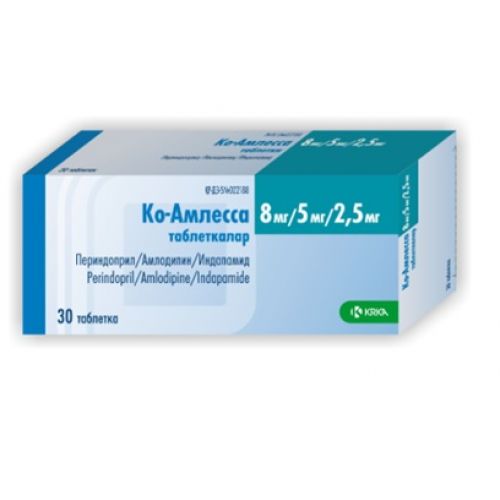
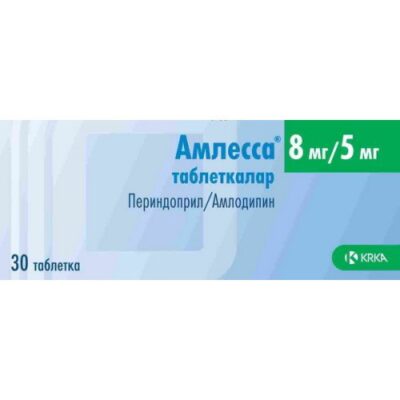
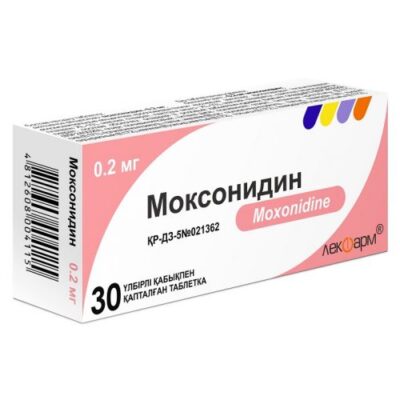
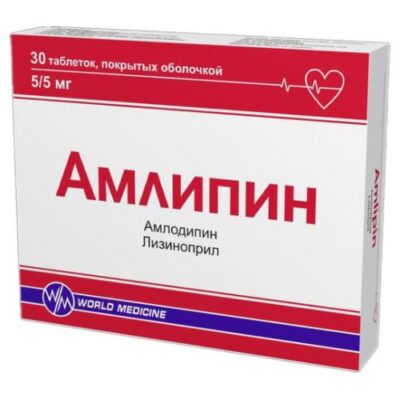
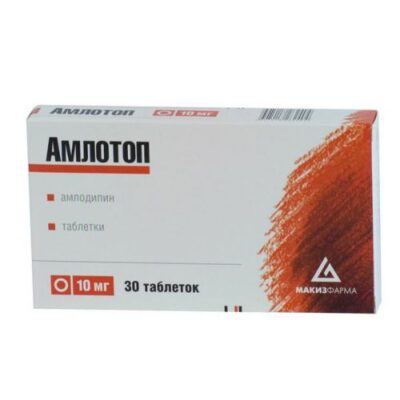
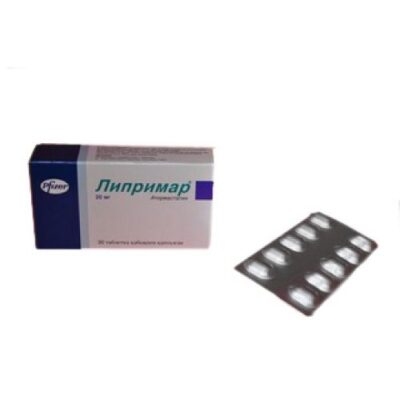
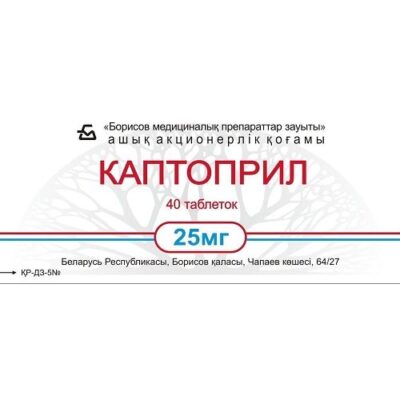
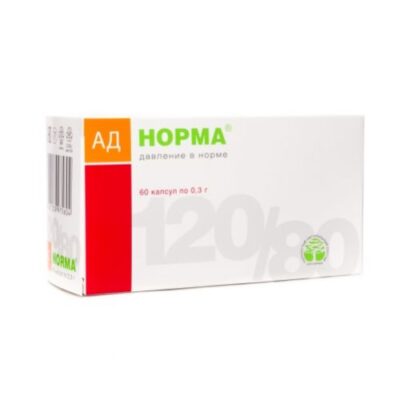
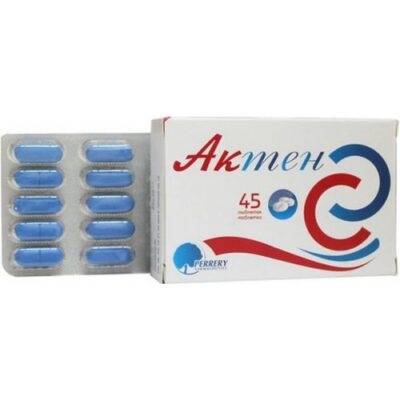
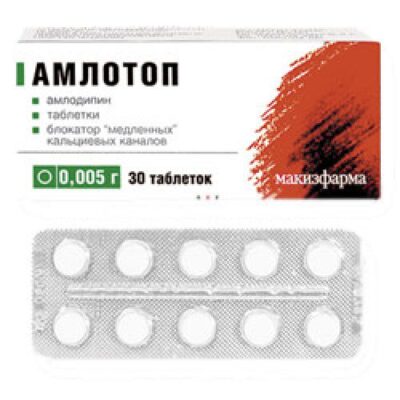
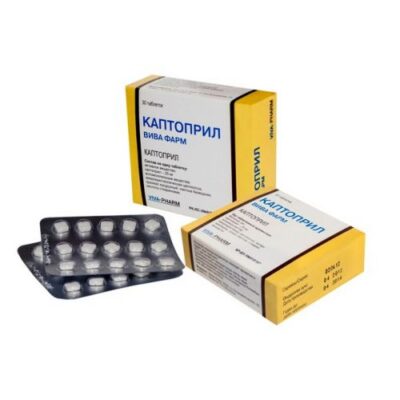






Reviews
There are no reviews yet.